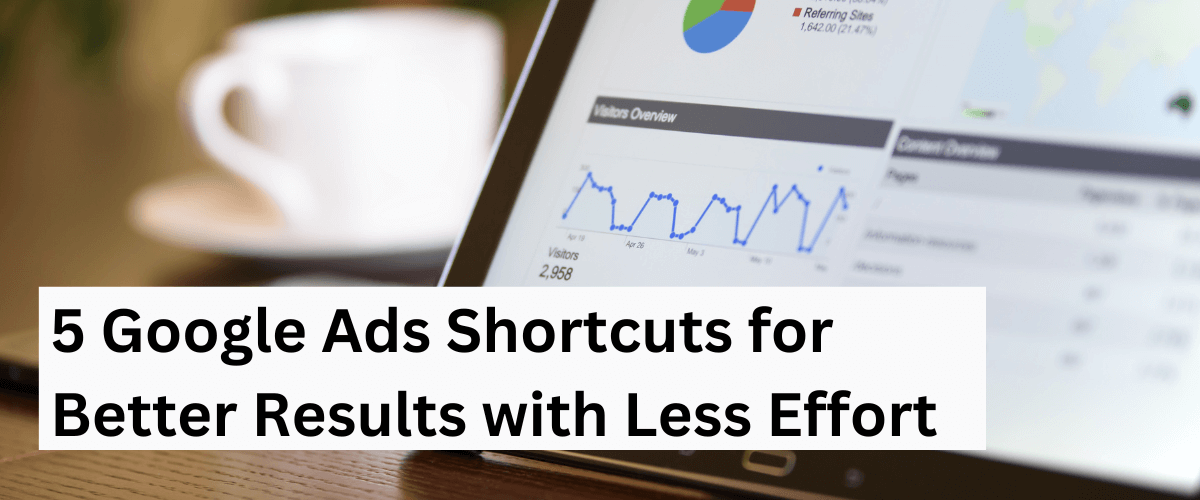Excellent Pay-Per-Click (PPC) results can take time, effort, and confusion. To stay current with trends, brands must constantly test, adjust, and look for new solutions. A successful PPC campaign depends on tasks like keyword research, ad text optimization, bid management, landing page optimization, and others. Because of this, they have Google Ads shortcuts that are very beneficial. With the aid of Google Ads shortcuts, brands can accomplish more with the same amount of resources rather than wasting time and effort. Some Google Ads Shortcuts or Google Ads Tricks are listed below.

Table of Contents
Google Ads best practices that businesses can adhere to for improved outcomes with less work:
Organize variant keywords
This Google advertising trick is quite clever. SEM specialists used to have to be very specific about the keywords they wanted to show in Google Ads. Because Google was literal with the keywords in Phrases and Exact keyword match types, it was necessary to keep an eye out for misspellings and plurals. By matching “close variants” of these match types, Google Ads has altered how Phrase and Exact matches handle these queries. Google may display the ad when a term is plural, misspelled, or similar. To prevent the account from becoming overloaded with unnecessary terms, it is advised not to have those versions in the Opportunities tab.
Eliminate duplicate keywords
When content is optimized, the same keywords may be used more frequently, which can lead to duplication. Additionally, searching for such terms to find duplicate keywords may take time. The top menu’s Tools section of the Google Ads Editor now has a useful feature or tip that can be used. Finding duplicate keywords is one of the many options it offers. For instance, a strict or any word order can be chosen. Strict word order is preferable if Exact Match is the main consideration. However, removing modified broad search phrases that are simply the same words in a different order can be done using any word order. Another searchable option is the Location of duplicates, which enables finding duplicates within a single ad group, campaign, or range of campaigns.
Use Notations
When comparing data from one year to the next, brands occasionally discover better results. This could be because of varying holiday dates each year, a PR boost, or any other reason. Thus, in these situations, using Notes can help record, or total that history and save time trying to dig and put this kind of analysis together. Click on the Campaign or Ad Group View in the performance graph to use notes. Hovering over the line reveals the date, performance metrics, and a blue Add Note button. You can type the note on that.
Ad customizers
An item’s sale days may be counted down by brands on occasion. Or an eCommerce company might want to accurately and promptly display how much of a particular product is still in stock. It is tiresome to manage these repetitive ads manually. Ad customizers are a tool that brands can use to simplify the work. To use this feature, brands must create a Google Ads-compatible template with product attributes. Devices, a schedule, a customer ID, a start date, an end date, and restrictions on the target location are a few examples of common attributes that can be specified. This enables a brand to input a piece of code linked to the informational spreadsheet, which then inserts information into the ad copy, such as the appropriate model, brand, price, or other parameters. Such automated procedures help run more effective and relevant ads while saving time.
Leverage tools and automation In PPC, reporting and analysis can take much time. Brands ought to make good use of that time by using Google Ad Scripts to cut down on it. The ad scripts can generate unique reports or carry out automatic account changes. A brand or an SEM specialist can use scripts to track past Quality Scores, sharp increases in spending, find underperforming keywords, and more. Google Ads is difficult and time-consuming at times.
Many administrative tasks consume time that could be used for strategy and higher-level PPC decisions. It is safe for brands to use Google’s best practices for the ads mentioned above. Try your automated bidding and responsive search ads, then use the time you’ve saved to make things that will make ongoing management much simpler. This is where SEM experts come in. Send us a message if you’d like to learn more about Google Ad Shortcuts or best practices for Google Ads, and we’ll get back to you!
